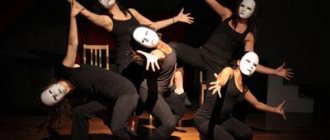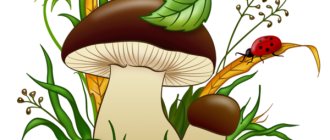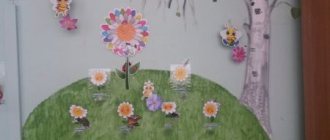Hello dear readers! Today we will talk about a horse, how it gallops and how to stop it. You may ask: “Why do we need this, we don’t have a horse?” But no, everyone has this horse and it lives, funny to say, in their mouth. I will tell you in which case the horse articulation exercise can be useful and how to do it. Horse (L) is actually a very useful and multifunctional activity.
First of all, it is used as a test task. When examining a child, the speech therapist, checking how the tongue works, asks to click it. And if you observe carefully, you can notice how the organs of articulation work. All the shortcomings in their work, violations of tone, bite, asymmetry and synkinesis immediately appear.
Diagnostics of articulation organs
If in the process of clicking saliva splashes, the lower jaw goes back, and the tongue does not stick well or does not stick at all or does not reach the palate at all, then a suspicion arises that in this case we may be talking about malocclusion, dysarthria or a shortened frenulum, or even combination of all these factors.
In this case, it becomes clearer what and how to look at the child in order to understand the degree of impaired tongue mobility, the level of dystonia in order to discuss with the parents further work to correct the defect and the need to attract help and consultation from other specialists: a neurologist, an orthodontist, an otolaryngologist .
Neurologist's comment
I largely agree with the author. All these exercises will not be superfluous with one BUT. They are suitable only for healthy children; they cannot be called correctional. If the baby already has a speech delay, it must first be shown to a neurologist. The fact is that articulation and other work of small muscles will take place correctly only when we have “established” gross motor skills and the connection between breathing and muscle tension.
In correctional groups, we give articulation gymnastics two to three months after we start working with the child.
About phonemic awareness
. Its disorders are usually associated with hearing impairment or with damage to the temporal region of the brain or subcortical nodes responsible for hearing. Simply exaggerating sounds and increasing the volume will not achieve anything. You need the help of an audiologist or neurologist. This technique involves a lot of breathing exercises. Unfortunately, they have contraindications that parents need to know about. If your baby has confused, uneven breathing, he needs to have an EEG done before doing breathing exercises. The presence of epileptic activity or seizures is a contraindication for such activities. The presence of convulsive readiness, vegetative-visceral paroxysms, and other analogues of seizures is not a contraindication for gymnastics, but in this case the volume and duration of exercises should be directly related to changes in the electroencephalogram. Be sure to consult your doctor.
Elizaveta Melanchenko
Help with sound production
Exercise L is good in itself, as it develops those muscles that can lift and hold the tongue in the upper position when its tip rests on the upper teeth, which is sometimes necessary for producing “upper” sounds - hissing and sonorants. In addition, when the tongue is sucked, it flattens out, which helps make it wider. A wide tongue is necessary for producing sibilants.
Based on this, we can conclude that speech therapy exercise L should be included in all preparatory production complexes. Sometimes it is enough for a baby to learn to click his tongue well and correctly, and in this way he can produce R and other sounds. The most important thing is that this activity is interesting for him. Sometimes children get so carried away that they start clicking themselves while playing.
Learn how to make a mushroom
L is often used to learn how to do the mushroom exercise. You need to click your tongue and try to capture the moment when it sticks to the roof of your mouth and try to hold it. An auxiliary technique is clicking and suctioning the tip of the tongue to the alveoli and upper teeth. We help the child with the handle of a spoon, a speech therapy probe, or perhaps an edible stick, so that the tongue is held parallel to the palate, and its tip should rest strictly on the front teeth.
Strengthen and stretch the “frenulum” under the tongue
And most importantly, this is a very good way to stretch and strengthen the hyoid ligament. Often it is too short and the tongue does not reach the palate. By clicking, we stretch it. This process is not too fast, but not traumatic. Of course, if you overdo it, you can severely strain the muscles under the chin. But it is almost impossible to make a gap on it, as if you simply pull the tip of your tongue. It is best to stretch the ligament by following this path - “horse - fungus - accordion”. That is, by clicking your tongue, learn to suck it and hold it against the roof of your mouth, in this position to stretch the ligament. Games “fungus grows”, “accordion plays”, “pump pumps”.
"The horse stopped"
A good addition to exercise L is “the horse has stopped.” Tell the child that she was jumping and jumping and was tired, she decided to drink some water and eat. To do this, you need to close your lips and pronounce the sound “tpprrru”, like cabbies stopping harnessed horses. This is a very good exercise, it helps relieve tension, reduce the tone of the facial muscles and tongue.
It happens that babies cannot do it, their lips do not close. We need to show them how to pull them forward like a duck. If this doesn’t work, then try to lift the corners of your mouth up and forward with your hand, relax the muscles of the chin and upper lip. This does not always happen right away, especially with dysarthria. Don't be upset, just keep working and believe in success.
Developing phonemic awareness
Play audio cassettes for your child, draw attention to different sounds in your apartment and on the street (“Can you hear them knocking: knock-knock!”, “It’s the birds singing!”), buy different squeaking, rattling, sounding things (tumbler, musical carousel, xylophone and etc.).It is very important to “translate” the sounds of the surrounding world into speech (someone sneezed - say “apchhi”, dishes clinked - say “ding”).
Start doing special exercises. For the little one, of course, it will be just a game. You can take several sounding objects or musical instruments (tambourine, pipe, accordion, etc.). Teach a very young child to make sounds from them: ring, knock, rattle. Tap on different surfaces and let him hear how different the sounds are. If your baby is not yet holding a rattle, tie it to an arm or leg. Then teach him to play different instruments, knock on a drum (or on a pan). Bring the rattles to one ear or the other, let's listen to the clock, the phone. Sing and recite poetry to your baby. Use “funny sounds” and imitate animals. Read to him. At first, focus on rhythm and intonation.
When you hear a sound, ask: “What is that?”, then bring the child up and show what it sounded like. For a child after one year old, games for solving sounds are suitable. For example, show how different objects (musical instruments) sound. You can start with two, and very different in sound (pipe, drum). Then ask the child to guess what it sounded (until he saw it). Gradually make the task more difficult. You can also “speak” for different animal toys (or record on an audio tape: “quack-quack”, “oink-oink”, etc.), ask them to guess (show) who “talks” like that. Gradually make these games more difficult by using more sounds, and sounds that are harder to separate. Whisper a “secret” in your baby’s ear and let him whisper something to you too. And all this is in the form of a game, then the baby will imitate you.
It is not always easy for a small child to control his or her voice. Play with him, speaking softer and louder, controlling the pace. He also has to learn this. When telling fairy tales (for example, about seven kids), portray a wolf with a “thick” voice, then with a “thin” one, and let the baby himself try to repeat this. In other fairy tales, let him try to voice a bear, a lamb, a mosquito, use contrasts. Talk to your child either quietly (as if everyone is sleeping and you are sneaking through the forest), then loudly, with different intonations, while making up fairy tales as you go. Show a small and a large dog: how the small one barks (quietly), and how the big one barks (loudly), let the child repeat after you.
Read the poem (the first two lines in a quiet voice, hitting your finger quietly, the last two lines in a loud voice, loudly clapping your hands):
We gently beat finger on finger. We gently beat finger on finger. And then we clap our hands loudly. Let's clap our hands: bom-bom-bom.
Learn the poem (say the first line usually, the second quietly, the third usually, the fourth in a whisper: The mouse whispers to the mouse: “Are you rustling, aren’t you sleeping?” The mouse whispers to the mouse: “I’ll rustle more quietly.”
For an older child, the following tasks are suitable: “I will pronounce sounds, and you clap your hands when you hear a sound ... (for example, “M”), “I will name words, and you clap your hands when you hear a word with a sound ... (for example, "R").
For 5-6 year olds, the following task is suitable: “Replace the first sound in the word with “R.” What word did you get? Fox-...is, modeling-...epka, disk-...isk, etc.”
You can invent similar games yourself. Ask your child to walk on his toes to a quiet sound, to walk to a loud sound, to run to a very loud sound (for accompaniment, for example, by hitting a drum). Blindfold the baby, ring the bell, and let him try to determine where the sound is coming from. Teach your child to reproduce the rhythm. For example, clap your hands twice and ask your child to repeat after you. Knock on the table twice, then again after a pause, get the child to repeat after you. Clap the rhythm together and say two-syllable words: ma-ma, pa-pa, os-en, du-et, strong, many, etc. (then three-syllable words: you-so-ta, le-be-da, etc.).
You can make up your own words. Start doing all the exercises as early as possible. Of course, choose the simplest ones first, doing them casually: blow on the soup together or play a cat licking a plate. Don't be upset if everything doesn't work out the first time. Be patient, gentle and calm. Gradually complicate the tasks, presenting them certainly in the outline of a fairy tale or game. Do not forget to praise your baby more often. Sure success awaits you.
Games and visual material
If the child moves his tongue well enough, you can diversify this task. For example, jump either faster or slower, then quietly or loudly. Click with your mouth wide open, and then make your lips a mouthpiece, draw the baby’s attention to how the sound changes. When performing, it is good to use various visual materials, depending on the interests and age of the children. These could be pictures, soft or wind-up toys, songs about horses or recordings with the sound of hooves, or videos of galloping animals.
I’ll end here, if you have any questions or comments or additions, please write in the comments to this article. Subscribe to blog updates, share your impressions on social networks with family and friends.
Developing speech breathing
Firstly, when you tell your child fairy tales, poems, for example, you mention the wind, teach the child to blow: blow in his face. Over time, he will begin to imitate you. Then you can also play, inviting the child to blow: give the baby a small piece of fluffy cotton wool, explain that this is a snowflake, it flies when the wind blows, you need to blow with your mouth, rounded lips, smoothly, and inhale through your nose.
Make a butterfly or an airplane out of paper, attach it to a string, and show your child how they will fly if you blow on it. You need to ensure that the exhalation is as long as possible.
Make a tree: cut out several strips of paper, glue it to a stick or pencil, the “wind” will sway the leaves. Such exercises also develop imagination.
Blow together on a piece of paper or a candle flame. It is important that the exhalation is not sharp, otherwise the candle will go out; you need to blow smoothly and easily.
Make (or buy) a pinwheel or toy windmill, teach your child to blow on the wings so that they spin.
Cut out birds from paper and place them at the very edge of the table. Command: “the birds have flown”, blow together, only once. The exhalation must be long so that they fly as far as possible.
Show your child how a dog breathes when it is hot: sticking out its tongue, noisily, quickly.
Teach your baby to blow hotly and also to warm his hands: let him inhale through his nose and exhale through his mouth, warming his hands raised to his lips.
It happens that children confuse the concepts of inhalation and exhalation, as well as inhalation and exhalation through the mouth and nose. Teach your child to smell a flower (you need to take an exaggerated breath through your nose, and then exhale with the sound “a-a”). Pick a faded dandelion and blow on it so that the fluffs fly off. Make sure that your baby puffs out his cheeks well and does not swallow or exhale air.
Draw the sea (for example, when telling fairy tales by A.S. Pushkin): as you inhale, smoothly raise your arms up, as you exhale, lower your arms, say a long “sh-sh-sh.” An older child can practice with soap bubbles or water. Let him blow into a tube (straw or pasta). By dipping a straw into the water, you can make a “real storm”. Pour water into a basin, you can launch boats, for example, paper ones. Then draw the wind. You need to blow slowly, pursing your lips like a tube, without puffing out your cheeks. Show your child how you do it. With an even exhalation, the boat moves smoothly through the water. Now blow intermittently: “p-p-p” and explain that a gusty wind blew. Let the child try to drive the boat to a certain place. Of course, this is an exercise for older children; it is not so easy to cope with such a task.










